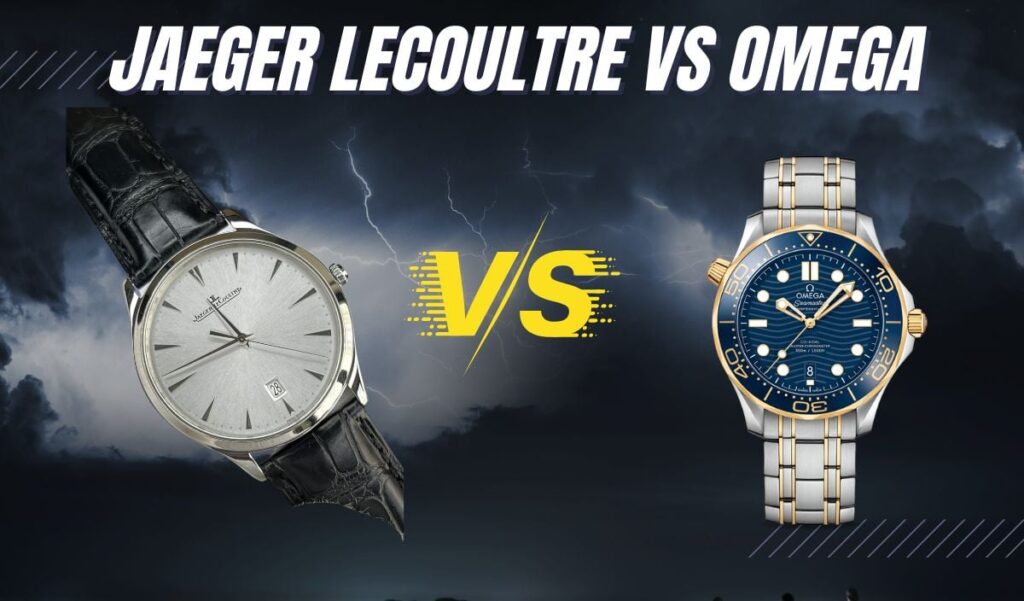When enthusiasts debate the finest Swiss watchmakers, two maisons consistently rise to the top: Omega and Jaeger‑LeCoultre. Both bring centuries of heritage, technical prowess, and a reputation for outstanding performance. Yet, their core strengths diverge—Omega excels in chronometer accuracy and sports‑ready robustness, while Jaeger‑LeCoultre shines in crafting exceptionally complex movements and elegant dress pieces. Here’s how they stack up across key dimensions.
1. Heritage and Brand Identity
-
Omega traces its lineage back to 1848 and has become a symbol of precision, reliability, and adventure. It’s famed for its Speedmaster “Moonwatch,” the first timepiece on the lunar surface, and for being the official timekeeper of the Olympic Games.
-
Jaeger‑LeCoultre was founded in 1833 and is often called “the watchmaker’s watchmaker” for its extensive in‑house movement production. With over 1,200 calibres to its name, JLC has supplied complications and base movements to many leading brands while maintaining its own line of elegant, finely finished timepieces.
2. Chronometer Mastery
-
Omega’s Co‑Axial and Master Chronometers: Omega revolutionized the wristwatch landscape by adopting the Co‑Axial escapement, reducing friction and extending service intervals. Its Master Chronometer certification, awarded by METAS (Swiss Federal Institute of Metrology), guarantees anti‑magnetic resistance up to 15,000 gauss, precision within 0/+5 seconds per day, and water resistance. Popular models like the Seamaster Diver and Aqua Terra embody these feats.
-
Jaeger‑LeCoultre’s Precision: While not METAS‑certified, JLC movements undergo rigorous internal testing. The brand’s Atmos clocks even keep time using ambient temperature variations. In wristwatches, calibres like the 899 series and the Powermatic (in certain Master Control models) achieve COSC chronometer certification, ensuring accuracy within –4/+6 seconds per day.
3. Complications and Craftsmanship
-
Omega focuses primarily on robust, legible complications: date, GMT, chronograph, and occasionally moonphase. The Speedmaster Moonphase and Seamaster Planet Ocean GMT showcase Omega’s flair for high‑performance tool watches with added functionality.
-
Jaeger‑LeCoultre is synonymous with high complications: minute repeaters, tourbillons, perpetual calendars, and the iconic Reverso with dual dials. The Duomètre and Master Grande Tradition lines house some of the most elaborate mechanical marvels—ultra‑thin calibres, flying tourbillons, and chiming mechanisms—that highlight JLC’s atelier skills.
4. Design Philosophy and Wearability
-
Omega emphasizes sporty elegance and legibility. Its cases tend toward 38–44 mm, with robust bracelets or rubber straps, making them ideal for active lifestyles yet versatile enough for daily wear.
-
Jaeger‑LeCoultre leans toward classic proportions, often between 34–41 mm, with slim profiles and refined dress‑watch aesthetics. The rectangular Reverso remains an icon of Art Deco design, while the Master Control series offers clean, understated dials suited to formal settings.
5. Value Proposition and Pricing
-
Omega entry points begin around USD 3,500 for basic automatic models, scaling up to USD 10,000+ for Master Chronometer chronographs and specialty editions. These watches balance excellent in‑house technology with accessible luxury pricing.
-
Jaeger‑LeCoultre starts at roughly USD 5,000 for simple three‑hand models, climbing steeply into five‑figure territory for high‑complication pieces. Given its complex finishing and in‑house complications, collectors often view JLC as offering exceptional value in haute horlogerie.
Choosing between Omega and Jaeger‑LeCoultre depends on your priorities. If you seek bullet‑proof accuracy, modern anti‑magnetic innovation, and iconic sports‑watch heritage, Omega stands unrivaled in the chronometer arena. If your passion lies in traditional craftsmanship, intricate complications, and consummate finishing, Jaeger‑LeCoultre’s horological artistry will captivate you. Ultimately, both maisons epitomize Swiss excellence—one through pioneering precision, the other through mechanical mastery. Whether East or West within the Swiss panorama, your choice celebrates the highest standards of fine watchmaking.
